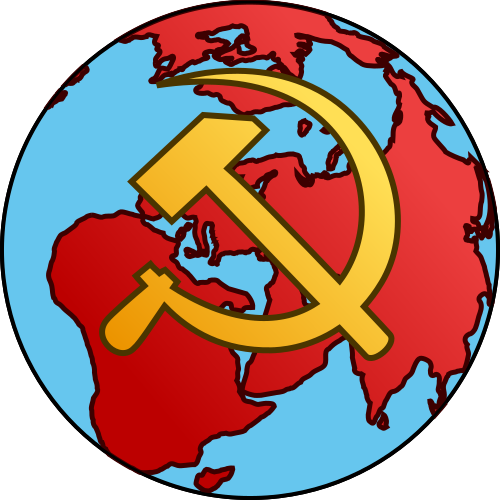More languages
More actions
| Communist International | |
|---|---|
| 1919–1943 | |
| Leaders | |
• General Secretary | Georgi Dimitrov |
| History | |
• First Congress | March 1919 |
• Second Congress | July 1920 |
• Third Congress | June 1921 |
• Fourth Congress | November 1922 |
• Seventh Congress | July 1935 |
• Dissolution | 1943 |
The Communist International, also known as the Third International or Comintern, was an international communist organization led by the Soviet Union. It was established in 1919 after the October Revolution and dissolved in 1943 after the Nazi invasion of the USSR. It was briefly succeeded by the Cominform in 1947.
Structure
Delegates from communist parties around the world participated in World Congresses of the Comintern. The Congress decided the number of votes for each party based on its membership and the political importance of the country it is from. The World Congress elected an Executive Committee to lead between congresses, and all parties in the Comintern had to follow the decisions of the Executive Committee. Individual parties could appeal against resolutions of the Executive Committee to the World Congress but had to follow the Congress's decision.
The Executive Committee often invited delegates from communist parties to their meetings but only members elected to the Committee at the World Congress could vote. The Executive Committee elected a Presidium that met at least once a month and the Presidium elected a Political Secretariat.[1]
History
First Congress
The First Congress of the Comintern was held in Moscow in 1919. It included communist parties from many countries, including Russia, Hungary, Germany, Japan, Italy, and the United States.
Anti-Comintern Pact
In 1936, Nazi Germany and Japan signed a pact against the Comintern. This pact was later signed by the rest of the axis and fascist Spain.
References
- ↑ J. Peters (1935). A Manual on Organisation: 'Structure and Functions of the Party Organizations'. New York City: Workers Library Publishers. [MIA]

